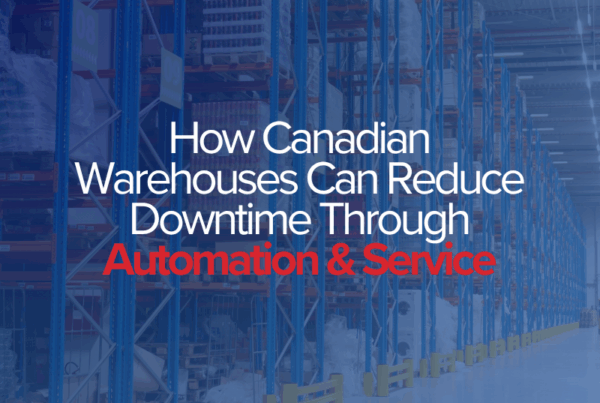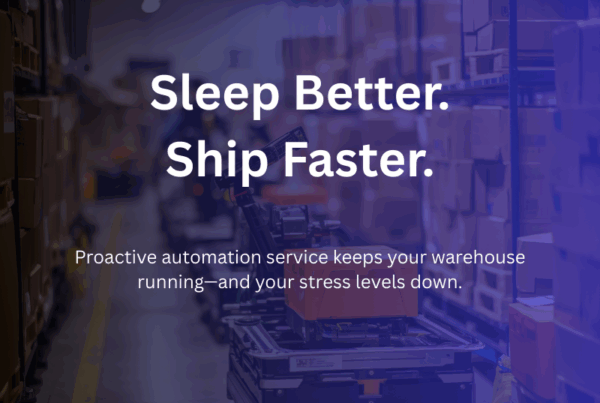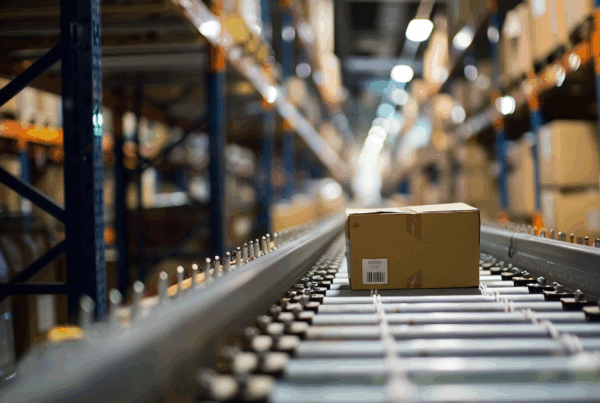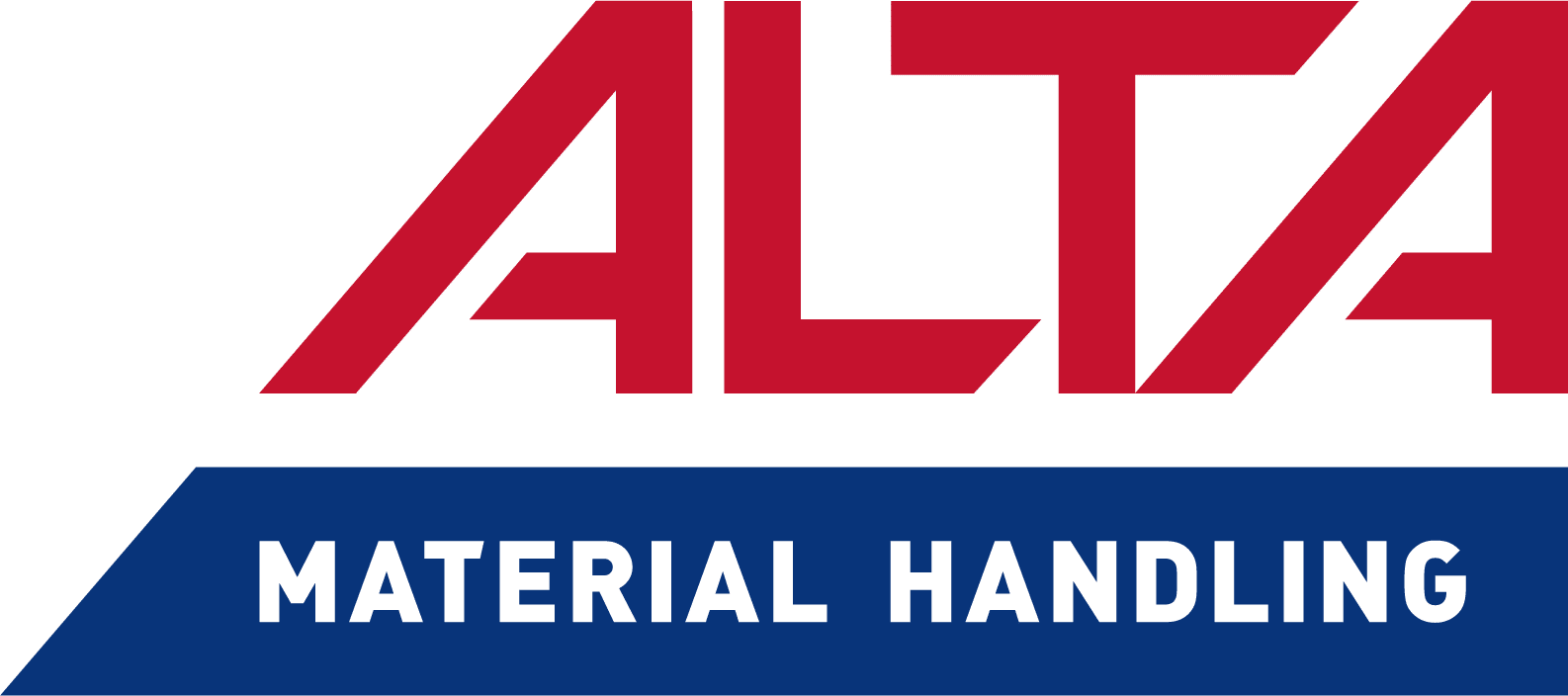Modern warehouses and distribution centers do what warehouses have done for millennia – receive, store, process, and ship goods. For thousands of years, these jobs were done without automation – unless you consider automation to include the wheel and pulley.
Still today, warehouses aren’t required to be automated – all of their primary jobs can be done without it.
Of course, warehouses don’t exist in a vacuum, but are affected by outside sources. Three of those – competition, customer expectations, and the global marketplace – have pulled warehousing into a race. It isn’t enough to do the job well. Rather, the job has to be done as well as all of the competition in the world, or customers will look to someone else to fill their needs.
To keep up with that competition, businesses have to streamline their operations. A business that runs without automation, however, will be limited by the capabilities of the human body. We can only do so much for so long before we get tired, confused, or even injured.
Eventually, your business will turn to automation to speed up slow and repetitive tasks and to increase accuracies. What it means to automate – whether you look to software that runs fancy algorithms to guide your operations, or powerful machines to lift and move your product, or a combination of the two – will depend on your needs and your industry.
In any case, when considering the implementation of automation, there are nearly as many best practices to consider as there are pitfalls to avoid. Because automation is such a broad term, there is no single, best path toward lowering your costs and increasing your efficiencies.
There are, however, periods in the evolutionary process of your business when it’s possible to stop, take a breath, and ask yourself what the next best step is.
At PeakLogix, our mission is to provide you with innovative solutions that maximize your resources and productivity. Because we know both the importance of automation to your operations as well as all of the confusing, disparate parts of automating, we’ve created this guide to help you see the path forward as you decide to bring automation into your facilities.
Stage 1 – Engage outside experts
When implementing automation, you really have three options: install it yourself, have the manufacturer of a piece of equipment install it, or hire a reputable systems integrator.
The DIY method
Installing equipment in-house has its pros and cons. For small projects, when the processes around the new system are already well defined, installing equipment yourself means that your team knows how to maintain that equipment, saving you time and money on later repairs or basic servicing.
For larger projects, however, it isn’t enough to install something well. Rather, you also must ensure that the equipment does more than simply work, but works well with everything that’s both up- and down-stream in your operations. Those considerations are what systems integrators excel at – not just getting one piece of equipment right, but creating an operational ecosystem with thousands of moving parts that all work together seamlessly.
Manufacturer installations
The benefit of trusting manufacturers to install their equipment is that they are experts of that equipment. They will get that installation right or – failing that – they will keep coming back until you’re satisfied. Unlike an in-house install, a manufacturer isn’t going to walk away from an installation staring with a puzzled look at the few extra bolts that didn’t find holes.
While you can be sure that a manufacturer installation will go well, what they still don’t do is consider the larger picture of your business. For example, a manufacturer of vertical lift modules will be able to look at your business and tell you that, on the machine you’re considering purchasing from them, you might realize its ROI in 2 years.
They won’t, however, have looked at your deeper processes to see if there could have been a different first step. Looking at inventory controls broadly, for example, there might be better solutions with less up-front costs and more quickly realized ROIs.
Systems integrators
The debate about systems integrators is that, to the uninitiated, they appear to be middlemen – and why would you bring in a middleman if you already know what you want? For example, if an executive knows he wants to add a conveyor to his line, then why would he need a systems integrator as opposed to going directly to the manufacturer to purchase it and arrange for installation?
The answer is simple. Systems integrators do more than install equipment and integrate it with your current systems. Rather, integrators look at your whole process – from inbound receiving to outbound shipping – and help you build a strategy not just to install a single piece of equipment, but to prepare your business for growth both immediately and in years to come.
A systems integrator will identify the problems affecting your productivity or efficiency rates now. They will then help you solve those problems in a way that not only maximizes the ROI on those solutions, but also builds solutions that consider long-term business goals to maximize your long-term ROI.
Stage 2 – Look at the entire supply chain
Warehouse managers are experts at the systems within their facilities. They are also busy professionals whose full-time job is to make sure their systems are running efficiently.
The supply chain, however, extends beyond your doors. Often, people upstream can do things more cost-effectively than your operations can – bundling or packaging, for example. It’s worth asking if there’s more value in investing in a piece of equipment to do that work, or if it makes sense to pay the supplier a little extra to have it done before the product even comes to your door.
On the flip side, looking at how product leaves the door is also important. There is often hidden savings in making small changes to how things are packaged, and reviewing the contracts with shipping partners like UPS and FedEx.
An experienced integrator not only knows this, but has handled these issues in the past and knows exactly the steps to take to handle them for you.
Stage 3 – Optimize existing systems first
Automation is often conflated with optimization. However, while automation is part of the optimization process, optimization can begin before automation is brought in.
These two components of implementing automation – the physical systems and the less tangible optimization – are so often confused because they have evolved in tandem. The same advances in computing that allowed robots to gently pick up individual items, and conveyors to move entire truckloads of items, has allowed thousands and thousands of pieces of inventory to be tracked, their flow of movement to be studied, and the man hours around that process to be understood.
Bringing automation into a system that isn’t yet optimized simply doesn’t make sense, and frankly may be a waste of your capex budget. If I introduce automation to my picking process, for example, but the items are scattered over a hundred thousand square feet in ways that aren’t optimized for collection, then my automation is going to go through the time-consuming process of hunting for those items, just like my operator used to.
Especially in fast-moving, high-volume warehouses, the most important piece of automation isn’t any physical piece of equipment. Rather, it’s the software that’s running behind the scenes, allowing all of the different pieces of equipment and even warehouse workers to work together. Including a warehouse management system (WMS), warehouse control system (WCS), or enterprise resource planning software (ERP) in your plans can go a long way toward optimizing your entire facility. These systems are able to record and track all of the thousands of pieces of information needed to help your operation run smoothly.
Taking a deep dive into this data is tricky. To do it well requires the right tools and expertise. This kind of analysis can’t be done in-house or by a manufacturer who might know everything about their equipment but has never even considered how that equipment disrupts the workload up- and down-stream.
If your first move when considering automation for your warehouse is to look up big-name suppliers of popular equipment, recalibrate your approach. You’ll see a better return on investment if you back up and re-evaluate your processes first.
Getting those processes right – and right in a way that will allow automation to be seamlessly integrated later – should be prioritized before introducing a physical system into your operations.
Stage 4 – Think long term
Most automation is in some way scalable. AGVs can be purchased one at a time. Automated storage and retrieval systems can be added aisle by aisle. Pick-to-light can be added in some zones before others. Et cetera.
The real genius in a great installation isn’t in getting conveyors level or bolting robots to the floor in the right places. These things are important, but implementing automation is like chess: players who are thinking about what to do with this one piece of equipment will be outclassed by the players who are thinking about what to do with that same piece of equipment three moves later, when more systems are introduced.
That is what a systems integrator will do. They’ll help you think big-picture. It isn’t enough to know that adding a VLM will give you the increased throughput you need. And it isn’t enough to know how that VLM is going to affect your processes in real-time, up- and down-stream. You also need to know how that piece of equipment is going to affect your business next year. Or two years from now. And if that VLM doesn’t fit into that two-, three-, or even five-year plan, then you probably needed a different solution, because ultimately the money invested in that system won’t bear out.
An expert integrator won’t look only at your processes now to fix the big issue. Rather, they’ll help you fix the issues you’re having now, while also keeping an eye on the issues they know, from their experience with similar situations, will come up later.
If a warehouse’s issue today is, for example, throughput, then an integrator will be able to find the bottlenecks and offer solutions to speed up those processes. At the same time, they’ll understand how, now that your system is faster, the next problem you’re likely to see may be the accuracy of your labels as the demands in shipping will have increased. And they’ll be able to include in your plans today the ability to easily fix that problem later – by, for example, adding barcode scanners and printers – without losing your current investments.
One key to a successful integration is understanding all of the many options and how they affect each other. The right way to solve the puzzle is usually to let the ROI determine which parts to address first. There may be a million different ways to introduce different pieces of automation that all yield incremental gains that add up to big savings. Starting with those pieces that offer the best ROI will help accelerate your business’s growth.
Stage 5 – Secure cultural buy-in and project champions
A major key to seeing the best benefits that automation will bring is in how well that automation is received by the staff and employees.
For example, as part of a project, I might have an AGV with a little downtime. I might decide that, instead of sitting idly, I’d rather that AGV do a trash run. I could program it to go from office to office, so that my workers only need to step out of their door at the right time and deposit their trash in the bin that gets brought to them.
But if my office staff doesn’t buy into the new process, they may not want to be bothered to throw their trash away. A machine that could have sat idle is now adding wear and tear to its gears and batteries, and increasing maintenance costs for no reason.
Getting the buy-in from the employees and staff is a crucial element to introducing both optimization and automation. You should expect your employees to resist any change – even change that is good for them, and even change that is the difference between the success and failure of your business.
The most effective way to combat this is to have on your team a Project Champion.
Often, it’s best if this person is also the liaison between your business and the integrator. Your champion needs to be fully aware of the systems that are being implemented, what they can and can’t do, and how they’ll affect your operations.
At the same time, however, a big part of their job needs to be explaining to your personnel – in a positive, upbeat way – all of the benefits of the coming changes to your current operations. They don’t have to be a cheerleader, but they do need to be both motivated and motivational.
Stage 6 – Rinse and repeat
After you’ve looked at your shipping contracts and your in-bound freight for possible savings… after your current systems are optimized and your new equipment installed… after all the pieces of your warehouse are again moving smoothly together and your employees are, if not happy, then at least content… and after you’ve shaken hands with your systems integrator for what you think might be the last time… there is a final stage to the process: Looking through your systems and methodologies, finding the next most serious problem, and thinking about ways to deal with it.
Your suppliers will go through their own changes, and at times either up their costs or alter their services. Your contracts with shippers will run out and have to be renegotiated – and in the meantime, they’ll have changed how they bill businesses like yours in order to maximize their profit. Computer modeling will improve to the point that how your system currently flows will, in the future, be seen to have problems that couldn’t have been resolved before. In a few years’ time, optimizing your systems will mean something new. All of these changes will have to be handled on a continuous basis.
Your system will be better for the improvements you’ve made to it. In the time it took you to do that, however, your competition also improved their systems. And being better than you used to be isn’t good enough – you have to be at least as good as your competition.






